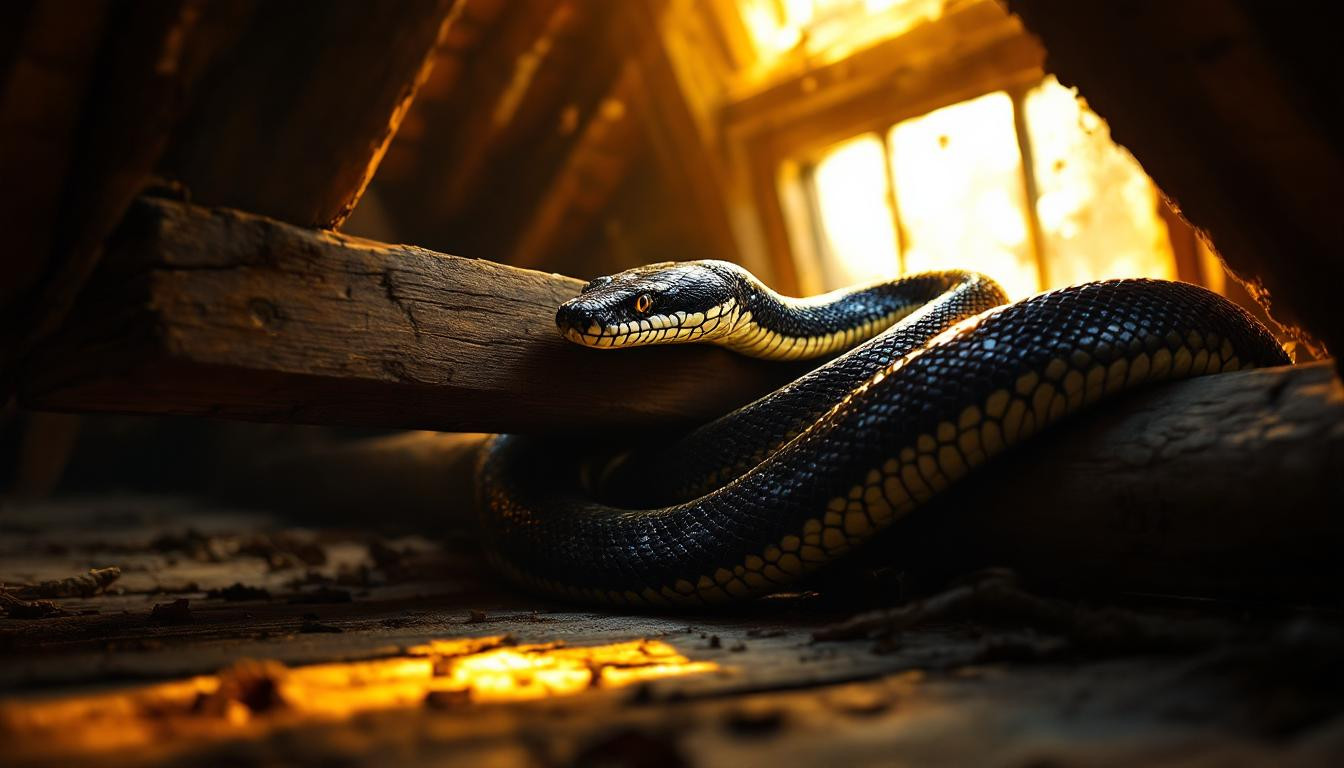As spring emerges across Europe this March 2025, an unusual resident continues to make itself comfortable in the most unexpected of places – your attic. The Aesculapian snake (Zamenis longissimus), Europe’s largest snake species reaching impressive lengths of up to 2 meters, has been increasingly discovered thriving in residential buildings, particularly in attics and wall cavities.
The surprise in your ceiling: Europe’s largest snake moves in
Homeowners across parts of Europe, particularly in the UK, have been startled to discover these magnificent creatures taking up residence in their homes. Professor Wolfgang Wuster, a leading herpetologist, explains the surprising phenomenon: “We’re finding them in people’s lofts. You find snake skins hanging off the drainpipes in an old folks’ home.”
As temperatures rise with the arrival of spring, these reptiles become more active after winter dormancy, making this the perfect time to be vigilant about your unexpected roommates.
Males prefer the indoor life, females stick to the woods
What’s particularly fascinating about these serpentine squatters is their gender-specific preferences. “Male snakes showed a particular preference for buildings, with seven out of eight seeking indoor shelter,” researchers discovered in a recent tracking study. The females, however, display different preferences, as scientists note that “female Aesculapian snakes prefer woodland habitats.”
This gender divide in habitat selection reveals the complex behavioral adaptations that have allowed these snakes to thrive in human environments, particularly as spring temperatures fluctuate.
No need for snake panic: They’re harmless housemates
“These snakes are not dangerous – they are non-venomous and excellent climbers. They feed on birds, small mammals, and reptiles which they hunt and constrict,” reassures the London Zoo, addressing common fears.
For worried homeowners, Professor Wuster offers comfort: “It’s unlikely to stumble across an Aesculapian under the sofa – while the snakes have still made their way inside, they prefer to steer clear of inhabited spaces.”
“Despite their size, ophidiophobic Britons needn’t worry – Aesculapian snakes are not venomous or dangerous to humans.”
Tracking the slithering settlers
How researchers came to understand these attic-dwelling serpents is itself a fascinating tale. “The study tracked 21 snakes using radio transmitters and revealed just how adaptable they were to British conditions,” note researchers who have been studying the species’ unexpected colonization.
Like intrepid travelers adapting to new environments – not unlike explorers braving the Arctic’s extreme edges – these snakes have shown remarkable resilience.
Origins of Europe’s attic invaders
The presence of these impressive reptiles in British attics has an intriguing backstory. Researchers believe that “the Aesculapian snake populations in Britain have intriguing origins,” likely escaping from zoos and research facilities decades ago.
Despite their non-native status, they’ve carved out a niche for themselves, transforming ordinary attics into exotic habitats that might remind nature enthusiasts of Earth’s most alien landscapes.
What to do if you find Europe’s largest snake in your home
- Don’t panic – remember they’re non-venomous and shy
- Contact wildlife services rather than attempting removal yourself
- Seal potential entry points during spring renovations
- Report sightings to local herpetological societies for tracking purposes
As we embrace spring’s renewal, these serpents remind us of nature’s extraordinary adaptability. Like travelers who transform through challenging journeys, these snakes have evolved from forest dwellers to urban adapters.
The Aesculapian snake’s story is one of remarkable resilience, turning ordinary attics into extraordinary wildlife habitats. As spring awakens these magnificent creatures, remember – you might be sharing your home with Europe’s most impressive serpent, quietly keeping your rodent population in check from the comfort of your rafters.
